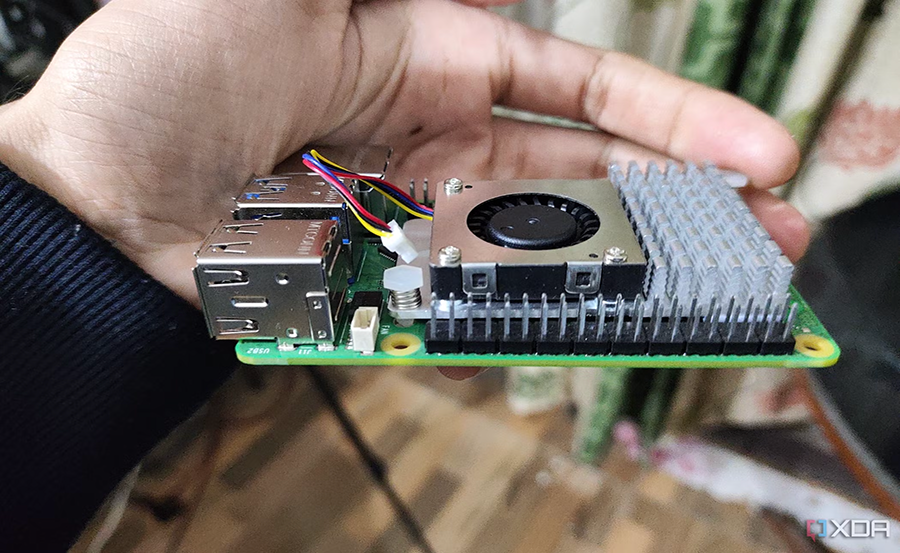In the realm of compact computing, Raspberry Pi stands out as a delight for hobbyists and professionals alike. It’s small, efficient, and versatile. But what if you could harness its full potential without ever connecting it to a display, keyboard, or mouse? That’s where the concept of a ‘headless’ setup shines. Coupled with the high-quality services of IPTV Tune, you’re gearing towards an unparalleled media experience. Let’s embark on this journey to transform your Raspberry Pi into a headless device and explore why IPTV Tune should be your go-to service.
Why Opt for a Headless Raspberry Pi Setup?
Setting up your Raspberry Pi without peripherals might seem daunting at first, but the benefits far outweigh the learning curve. The primary reason is efficiency. Without the need for a monitor or keyboard, you’re not confined to one location. You can tuck the Raspberry Pi discreetly in a corner, allowing it to serve as a seamless part of your home network.
This approach is not just about aesthetics or saving space. It’s also about functionality. A headless Raspberry Pi can power your projects remotely, manage network storage, host a media server, or even run the impeccable IPTV Tune service for streaming high-quality content anywhere in your home.
Pro Tip:
Say goodbye to cable and hello to convenience with 1 Year IPTV Tune Subscription our affordable IPTV subscription service.
The Role of IPTV Tune in Enhancing Your Setup
Before diving into the technicalities, it’s worth taking a moment to understand why an IPTV subscription through IPTV Tune is the best choice for Raspberry Pi users. IPTV Tune offers a spectrum of high-quality channels, ensuring that your streaming experience is nothing short of perfect. With seamless access to international and local broadcasts, it caters to a diverse audience. Plus, it’s tailored to integrate perfectly with a Raspberry Pi, maximizing your entertainment options.
Given its compatibility and superior streaming quality, IPTV Tune elevates your media setup. It delivers content with no interruption, living up to its reputation as the Best and High Quality Service. Now, isn’t that something you’d want from your media service provider?
Getting Started with Raspberry Pi Headless Installation
What You’ll Need
- A Raspberry Pi (Model 3 or 4 recommended for optimal performance)
- MicroSD card (at least 16GB)
- Power supply for the Raspberry Pi
- Network connection (Ethernet or Wi-Fi)
- SSH client (like PuTTY for Windows or terminal for Mac/Linux)
- Optional: USB-to-TTL cable for initial setup in case of issues
Downloading and Preparing Your OS
To begin your setup, you must first select a suitable operating system for your Raspberry Pi. Raspberry Pi OS is an excellent choice due to its stability and extensive support. Download the latest Raspberry Pi Imager tool from the official site.
Once downloaded, install and launch the imager. Insert your MicroSD card into your computer and select Raspberry Pi OS (32-bit recommended) from the OS options. Ensure you choose the correct MicroSD card as the target drive before writing the image. This part of the process is crucial; any mistakes here might corrupt your card, requiring a redo.
Enabling SSH for Remote Access
This step is essential because, after all, our goal is a headless setup! Once the OS image is written, navigate to the boot directory of the MicroSD card.
Create a file named ‘ssh’ (without any extensions). This file enables SSH on boot, allowing remote access to your Raspberry Pi. Place the MicroSD card into your Raspberry Pi and power it up. Ensure it’s connected to your network via a wired connection or the Wi-Fi configuration.
Accessing and Configuring Your Raspberry Pi
Connecting via SSH
With the Raspberry Pi powered and connected to the network, use an SSH client to access it. For Windows users, PuTTY is recommended. Mac and Linux users can use terminal.
In your SSH client, enter the Raspberry Pi’s IP address. If you’re unsure about the IP address, tools like Angry IP Scanner or your router’s admin page can help find it. Log in using the default credentials (Username: ‘pi’, Password: ‘raspberry’), and voila, you’re in!
Initial Setup and Updates
Now that you’re connected, it’s wise to run updates to ensure everything is up-to-date. Use the following commands:
sudo apt updatesudo apt full-upgradesudo reboot(after updates)
After rebooting, consider changing your default password for security using:
passwd
Integrating IPTV Tune with Your Raspberry Pi
Why IPTV Tune is a Smart Choice
At this point, you might wonder how IPTV Tune fits into the equation. The advantages of IPTV Tune are plentiful – starting from its reputation as the Best and High Quality Service to the variety it offers in terms of content.
IPTV Tune provides seamless integration with Raspberry Pi, optimized for quality and reliability. Whether it’s sports, entertainment, or news, IPTV Tune ensures you receive high-definition streams without breaks, placing it ahead in the IPTV marketplace.
Setting Up IPTV Tune
To set up IPTV Tune on your Raspberry Pi, first, ensure your Pi is running and updated. Depending on your preferred media software (like Kodi or Plex), follow specific guides available for that software with IPTV Tune. Here, we’ll provide a basic overview.
First, install a media center application. Kodi is a popular option:
- Ensure your Raspberry Pi is connected to the internet.
- Run the following commands:
sudo apt-get install kodisudo systemctl enable kodi.servicesudo systemctl start kodi.service
Optimizing Your Streaming Experience
Tips for Smooth Streaming
Even with a top-level service like IPTV Tune, several adjustments can enhance your viewing experience:
- Ensure your network connection is strong and stable, preferably using an Ethernet connection rather than Wi-Fi.
- Regularly update your media software to the latest versions.
- Check your Raspberry Pi’s performance and manage its resources to avoid overheating or overloading.
Using IPTV Tune for International Content
IPTV Tune’s capacity to deliver is not just limited to local channels. It provides access on a global scale. With Raspberry Pi handling the technical side, IPTV Tune opens doors to international broadcasts, making it a splendid tool for those who want a broader perspective on global media.
Real-Life Applications and Use Cases
Home Entertainment Systems
Using a Raspberry Pi as the centerpiece of your home entertainment system is more feasible than ever. With IPTV Tune’s extensive catalog, your media options are near limitless. The compact setup not only saves space but also allows for a clean, cable-free appearance.
Educational and Business Frameworks
Outside personal use, the Raspberry Pi paired with IPTV Tune manifests its strength in educational settings where live educational broadcasts enhance learning experiences. Similarly, in business environments, being able to stream relevant content in waiting areas or lounges is beneficial.
Remote Monitoring and Management
Raspberry Pi extends beyond traditional uses. With the headless setup, it’s employed in remote monitoring and management scenarios. Integrating IPTV Tune enables live feeds from varied locations for security or environmental monitoring, highlighting its versatility in a professional context.
Final Thoughts of Your Innovative Setup
Embarking on this headless Raspberry Pi setup is more than a project; it’s an opportunity to redefine how you consume digital content. With IPTV Tune, you have access to a world-class service tailored to suit both individual and professional needs. Your streaming experience becomes unbounded, venturing beyond ordinary visions of media consumption.
Frequently Asked Questions (FAQs)

What does a headless Raspberry Pi setup mean?
A headless setup refers to operating a Raspberry Pi without a monitor, keyboard, or mouse. The Raspberry Pi is accessed remotely using SSH or similar protocols, making it versatile for various uses while reducing overall physical setup.
Why choose IPTV Tune over other IPTV services?
IPTV Tune stands out due to its Best and High Quality Service guarantee. It merges reliability with a wide range of content, ensuring minimal interruption and maximized enjoyment. Its seamless integration with Raspberry Pi aligns perfectly for users seeking a comprehensive media experience.
Is it difficult to install IPTV Tune on a Raspberry Pi?
Installing IPTV Tune on a Raspberry Pi is relatively straightforward if you follow the guidelines provided within your media software of choice (like Kodi or Plex). The process typically involves setting up the media center and integrating it with IPTV Tune credentials.
Can multiple devices access IPTV Tune through Raspberry Pi?
Yes, with good network configurations, multiple devices can enjoy IPTV Tune streams through the Raspberry Pi. It does require careful management of bandwidth and device permissions to ensure each stream’s quality is maintained.
How can I improve my streaming quality using Raspberry Pi and IPTV Tune?
For optimal streaming quality, ensure your Raspberry Pi is connected via Ethernet, reduce network congestion when possible, and regularly check for software updates. The setup’s effectiveness largely depends on a stable network and resource management.
What are the typical troubleshooting steps if the headless setup encounters issues?
If you face issues, start by checking your network connectivity. Verify the Raspberry Pi’s IP address and SSH credentials. Restart the Pi to rule out temporary errors, and recheck configurations in the boot directory if necessary.
Are there specific Raspberry Pi models recommended for IPTV Tune streaming?
Both Raspberry Pi 3 and 4 models are suitable for IPTV Tune, with the latter offering enhanced processing power and better network capabilities, ensuring smoother streaming experiences, especially for high-definition content.
Top Features of the Enigma IPTV Device You Should Know


